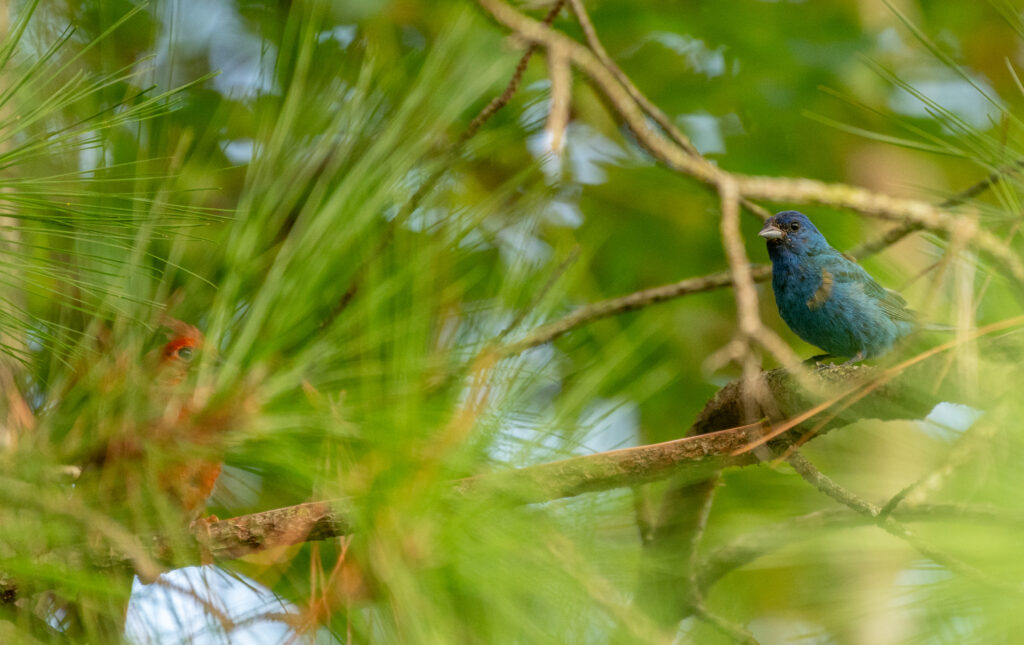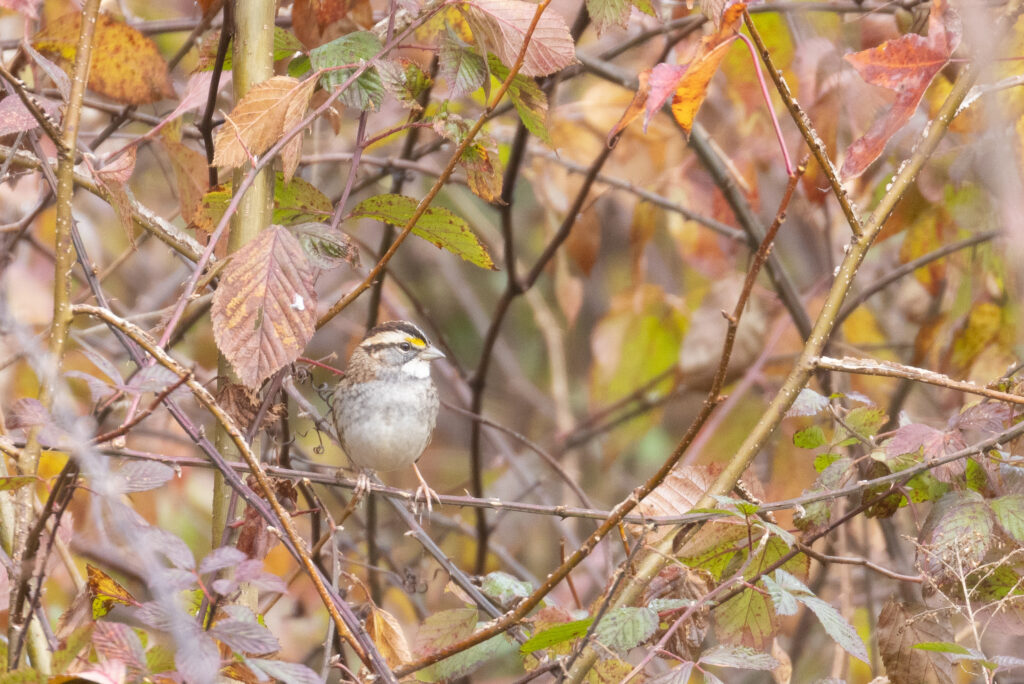
The end of summer brings the start of shorter days and eventually cooler weather. It’s also the beginning of fall migration! Twice a year, billions of birds across North America embark on journeys of varying lengths and destinations to find plentiful food and nesting resources. In the fall, many birds will be leaving their summer breeding grounds and head to their winter abodes as the availability of insects and other food beings to drop.
According to the Cornell Lab of Ornithology, more than half of the over 650 species of North American breeding birds are migratory. Migration is a critical natural process for many species of birds that serve important roles in pollination, pest control, and seed dispersal. Additionally, birds are indicators of healthy environments and offer many people a connection to the outdoors.
Fall migration in North Carolina
In North Carolina, fall migration is projected to last from August 15 through mid to late November. Over 50 million birds are estimated to have crossed through our state already, according to data from BirdCast. This online dashboard allows anyone to learn about bird migration patterns globally and locally with forecast and live migration maps that tell when, where, and how much migration is happening.
Along with online data and changing seasons, you can measure the wonder of fall migration by the changing feathered visitors and residents seen at TLC nature preserves. Beloved by the local birding community, Brumley North in Chapel Hill consistently ranks as a top birding hotspot in North Carolina with 171 bird species reported since the preserve first opened in 2017.
Brumley North attracts a variety of bird species
Brumley North’s diverse combination of at least six different habitats (rushing creek water, calm ponds, mature hardwood forests, open fields, pine forests, and wetland areas) draws a wide variety of bird species. You might catch a glimpse of herons, geese, or ducks in and around the preserve’s three ponds, which contain many small fish and amphibians. Nearby grassland and old farm fields provide spaces for soaring predators like hawks and owls to look for mice and other rodents. And on land, an abundance of berries, worms, and insects in the ground, native grasses, and trees support many species. At this time of year, persimmons are just starting to ripen at Brumley North and are popular food items amongst birds and mammals.
Here’s a quick round up of a few of the many birds that you might find migrating in, out, and through Brumley North and other places in the Triangle:
Birds leaving for winter: Indigo bunting, scarlet tanager, summer tanager, ruby throated hummingbird

Birds arriving for winter: White-throated sparrow, dark eyed junco, yellow-bellied sapsucker, cedar waxwing, yellow-rumped warblers

Birds spotted year-round: Carolina chickadee, tufted titmouse, Carolina wren, Eastern towhee, American goldfinch, Eastern bluebird, downy woodpecker, northern flicker, Eastern phoebe, red-bellied woodpecker, red tailed hawk, red shouldered hawk

Several fall migrants undergo incredibly long journeys, such as the yellow-throated warbler (Setophaga dominica) which winters in the Caribbean and Central America and the black-throated green warbler (Setophaga virens) which spends the season the Central and South America. For these birds and other travelers, finding places to stop and refuel are vital on their ways south. Birds also remember and return to where they hatched, where they stopped, and the places they overwintered each year, so it’s important to continue to protect these sites and disturb migration journeys as little as possible.
In addition to supporting TLC’s conservation work, there’s plenty of ways you can help support and protect birds during this special time of year. Our friends from New Hope Audubon Society have put together a few tips to keep in mind this fall:
- Lights out! During migration, birds navigate by the night sky. House and building lights can confuse them and may lead them off course, potentially to their deaths. Make their journeys safer by turning off bright outdoor lights and unnecessary indoor lights when it gets dark. Downward pointing dim motion lights are okay.
- Clean feeders and bird baths. Feeders, suet cages and bird baths should be cleaned regularly to prevent the spread of disease. This should be done year-round, but especially during peak migration season. A solution of one part bleach to nine parts water can be used. This should be done every two to three weeks during peak usage.
- Clean out nest boxes. Most birds are done nesting for the summer. Some bluebirds may still have a clutch so be careful to check first. Remove used nests and thoroughly wash the box out. Put it back up for late nesters and as refuge for birds during cold winter nights.
- Plant natives. Fall is the best time to plant as temperatures start dropping and the ground is still warm. Plant native plants that attract pollinators and provide seasonal wildlife appeal. Berry producing shrubs and trees provide food for birds and mammals when the days start to get cooler, and insects are harder to find.
- Leave your leaves! Leaves will start falling soon. If you can, please leave your leaves where they fall so bees, butterflies, fireflies, and other insects have a place to overwinter. It will also provide food for birds during the winter and great mulch next spring. If you can’t leave the leaves where they fall, rake them under your trees or to a wild area in your yard.
Resources for learning about birds in the Triangle
Check out local birding organizations for walks and resources! New Hope Audubon Society (NHAS) and Wake Audubon are local chapters of Audubon NC and the National Audubon Society. And each first Saturday of the month, you can join TLC and NHAS on a free bird walk at Brumley North. We hope to see you there!

